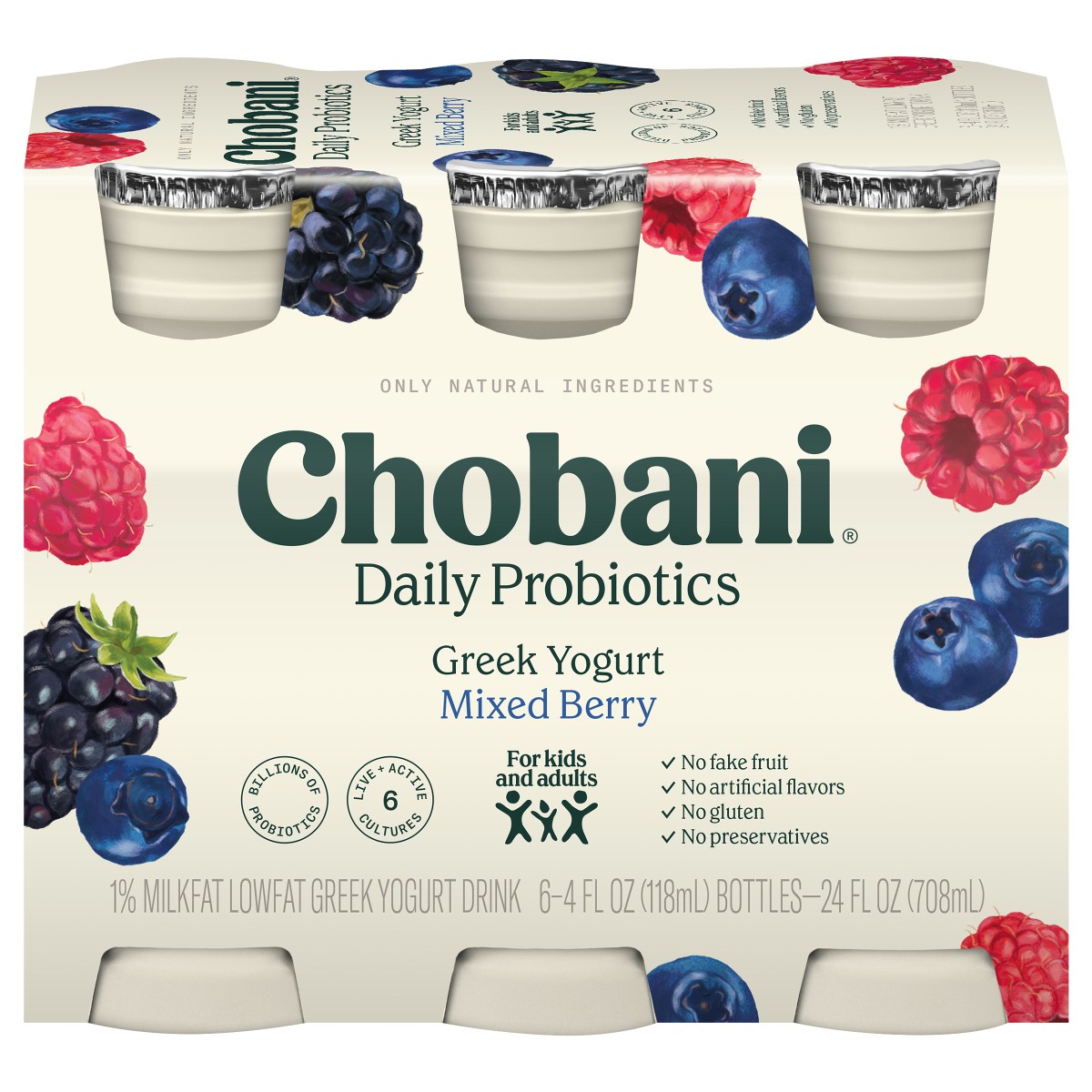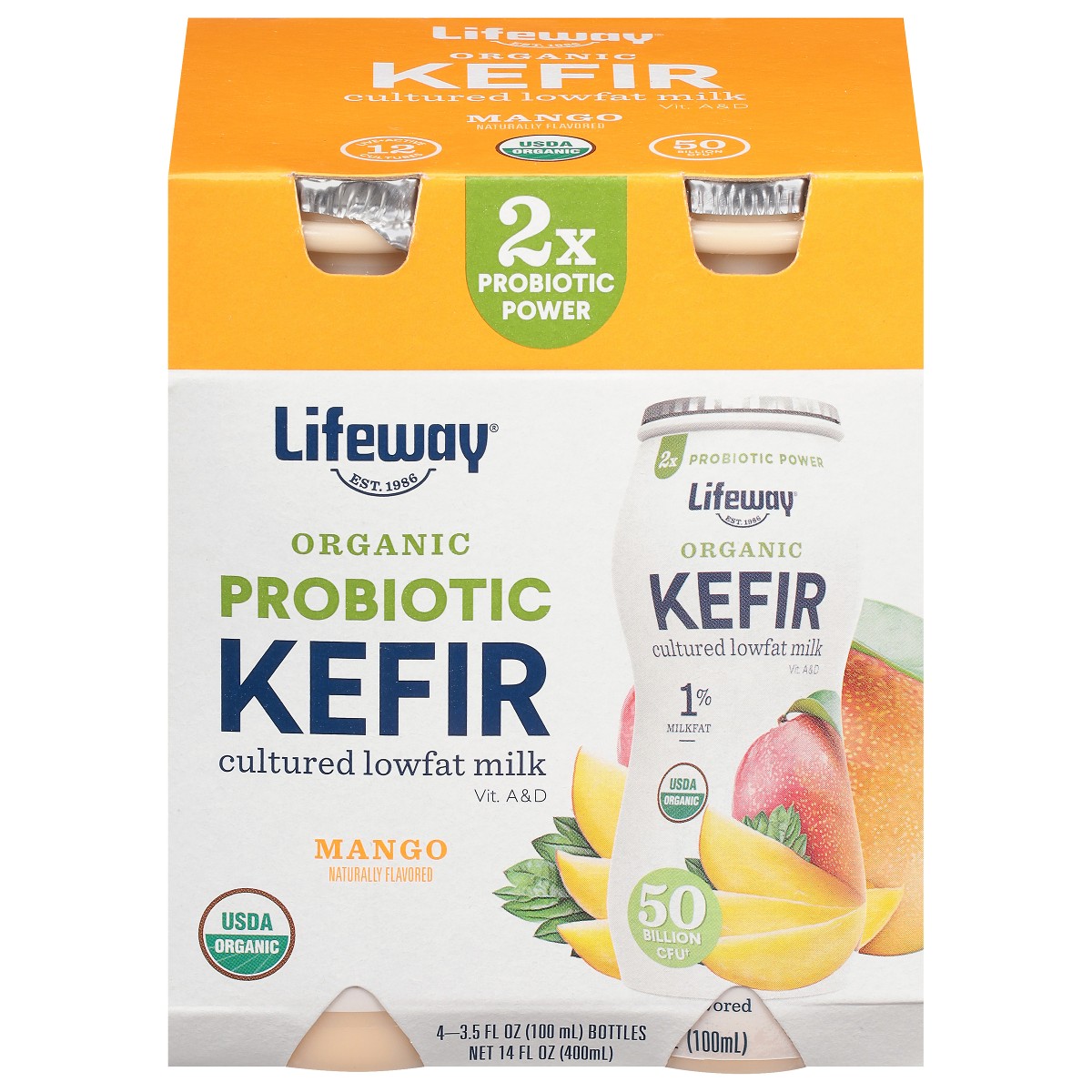CHICAGO – One byproduct of the COVID-19 pandemic was the shift in consumer interest in digestive health. Science shows that abundant, flourishing good gut bacteria promote a healthy immune system by staving off foodborne pathogens and viruses. As a result, foods designed to promote digestive health continue to be trending in new product development.
“World events of the past several years have motivated consumers to become more acutely aware of their health and wellness, driving them to proactively seek out foods and beverages that may help support their holistic wellness goals,” said Vaughn DuBow, global director of marketing-microbiome solutions, ADM, Chicago. “Consumers are connecting the dots between the health of their gut and their overall health and wellness. With that, interest in gut microbiome-supporting solutions, including prebiotics, probiotics and postbiotics, are on the rise.”
Influencing the microbiome
Trillions of bacteria inherently reside in the gastrointestinal system. This microbial community – the microbiome – has distinct physio-chemical properties that help regulate an array of bodily functions. These healthy gut bacteria are often supplemented through the consumption of probiotics. These are live microorganisms, most often lactic acid bacteria, which when consumed in adequate amounts, help create a better-balanced microbiome.
Probiotics are identified at three levels: genus, species and strain, according to Becca Henrickson, marketing manager-food cultures and enzymes, Chr. Hansen Inc., Milwaukee, Wis. Studies show that health benefits are strain specific. This means that not all Bifidobacteria (genus) nor all Bifidobacteria animalis (species) are probiotic. Specific strains with clear identity and supported by clinical documentation are true probiotics.
Chr. Hansen offers a range of probiotics, including two of the world’s most documented strains. Lactobacillus rhamnosus LGG has proven benefits across all ages and numerous health areas, including gastrointestinal, immune and oral health. Bifidobacterium BB-12 is associated with immune system and digestive support in children and adults. In addition, the company offers probiotics specific for plant-based dairy, including culturing systems that contain both starter cultures and probiotics.
Earlier this year, Chr. Hansen published results from a global survey deployed in 16 countries around the world to gauge consumer awareness of probiotics and their potential benefits. The data was collected in 2021 and results reflect a strong interest in learning more about probiotics among consumers worldwide, signaling a new chapter for market trends and a valuable opportunity for players in the global food industry, according to Henrickson. In total, 16,000 people participated in the survey.
Seventy-five percent of the surveyed population reported being very or somewhat familiar with probiotics, with 48% of respondents consuming probiotics daily or almost daily, whether in supplements or in other foods. Despite reported awareness, there is a range of misconceptions about probiotics. For example, 47% of consumers agreed or somewhat agreed to the incorrect statement that all dairy yogurts contain probiotics, when in fact most contain live cultures but not all contain probiotic cultures.
 Photo: Chobani
Photo: ChobaniSurvey results suggest that probiotic consumption is driven by an interest in their functional benefits, with 50% of respondents familiar or very familiar with the term gut microbiome. Consumers are most interested in information regarding health benefits and information that helps them identify the probiotic strains to select.
“The results of our survey highlight the importance of consumer education and encourage continuing efforts to work with the industry to provide this education,” said Lars Bredmose, senior director of commercial development in food cultures and enzymes. “At Chr. Hansen, we have worked to develop probiotic strain logos and trademarks that our customers may use to strengthen the credibility of their food with the world’s most-documented probiotics.”
The discipline of probiotic research is active. With increased consumer awareness and interest, probiotic suppliers anticipate new microbiome-supporting solutions for the active nutrition space.
“We’re continually identifying microbial strains to support consumers’ goals, and help brands easily incorporate these solutions into convenient offerings, such as on-the-go dairy-based and plant-based beverages and yogurts,” DuBow said.
This includes the company’s Bifidobacterium animalis subsp. lactis CECT8145 strain (BPL1), which was introduced at the beginning of 2020 and targets metabolic health. More recently, ADM introduced Bifidobacterium longum subsp. longum CECT7347 (ES1), which is supported by early clinical studies for markers associated with gut health.
“In human and in vitro trials, ES1 has shown potential to have positive effects on the gut barrier integrity,” DuBow said. “Additionally, emerging preliminary evidence suggests ES1 may help support gastrointestinal health in gluten-sensitive individuals, along with potential digestion and overall gut function support. As a lactic acid bacterial strain, ES1 can be incorporated into dairy and plant-based dairy alternative products, including yogurt and frozen treats.”
Fueling microbiota activity
Prebiotics are the fuel for probiotics to proliferate in order to positively impact the body. Prebiotics are frequently equated with dietary fibers, but only a subset of dietary fibers actually qualify as prebiotics. Further, according to the broad scientific definition from the International Scientific Association for Probiotics and Prebiotics (ISAPP), prebiotics need not be forms of dietary fiber.
“There are very few fermentable fibers, so-called prebiotics, that specifically nourish the beneficial bacteria being naturally present in the intestinal tract, ensuring their optimal development,” said Anke Sentko, vice-president regulatory affairs and nutrition communication, BENEO, Mannheim, Germany. “The promotion of growth of these beneficial bacteria includes the natural production of healthy metabolites to nourish the gut.”
A systematic literature review with meta-analyses published in July 2022 in Critical Reviews in Food Science and Nutrition, showed that chicory root fiber intake (starting at 3 grams per day) promotes significant growth of Bifidobacteria in the gut microbiome in all age groups and improves bowel function parameters. It is the first study of this kind, based on randomized control trials, that has investigated the effect of inulin-type fructans derived from chicory root on Bifidobacteria abundance in gut microbiota and health-related outcomes.
 Photo: Lifeway
Photo: Lifeway“Following the highest quality scientific evidence methodology, the prebiotic effect of inulin-type fructans sourced from the chicory root is confirmed,” Sentko said. “It yet again shows that integrating chicory root fibers into a person’s daily diet supports Bifidobacteria and thus their gut microbiome, while also improving the bowel functions of the very young to the very old.”
The company recently expanded its prebiotic chicory root fiber portfolio with an organic option. It is grown and harvested by certified organic farmers in Belgium, with the benefit of USDA organic equivalency.
“These natural prebiotic fibers function in the same way as the non-organic variety to improve taste and texture,” said Kyle Krause, product manager-functional fibers and carbohydrates for BENEO North America, Parsippany, NJ. “They also allow for fat and sugar reduction while adding health benefits in products across key applications, including dairy and alt-dairy. From a technical perspective, these prebiotic fibers have good solubility and are easily incorporated into a variety of dairy and alt-dairy products.”
In almond milk, for example, chicory root fiber delivers a natural creamy mouthfeel, and can even provide a pleasant sweetness, helping to alleviate any off flavor, Krause said.
Welcoming postbiotics
Postbiotics are an entirely new category of functional ingredients. They do away with the need to add probiotics by being the healthy metabolites that the microbiome produce, the compounds that possess the actual health benefit. This includes an array of enzymes, peptides, organic acids, fatty acids and more.
The ISAPP published a consensus definition on postbiotics at the end of 2020. The definition – a preparation of inanimate microorganisms and/or the components that confers health benefit on the host – is designed to clear up ambiguities in the relatively new term.
This essentially means that postbiotics are deliberately inactivated microbial cells or cell components, either with or without their metabolites, that confer a health benefit, according to Colin Hill, professor of microbiology, University College Cork, Ireland.
As with the definitions of probiotics and prebiotics, the ISAPP consensus on postbiotics states that use of the term must be linked to a health benefit. The definition includes the word “preparation” because the inactivation process and matrix may play a role in the functionality of the microbial biomass that comprises the postbiotic. The term “inanimate” was specifically used in the definition, rather than more common terms such as inactive or inert, which may suggest being ineffective.
Cargill, Minneapolis, offers a postbiotic ingredient that was discovered many years ago. It was only identified as a postbiotic when the term was defined by ISAPP.
“Cargill’s postbiotic is a one-of-a-kind ingredient, inspired by a real-life health discovery story,” said Jenna Nelson, channel lead-functional food and beverage. “Factory employees at our founding company’s animal feed manufacturing facility were taking fewer sick days than their office-bound colleagues. To understand why, the company commissioned pilot studies and learned that its fermented feed product supported the immune health of the factory workers exposed to the product. The company embarked on years of clinical research to show the safety and efficacy of this postbiotic for people.”
Backed by eight human clinical studies, the postbiotic has been shown to support immune and digestive health. It is inanimate, and pH and heat stable. It is listed on ingredient statements as “dried yeast fermentate.”
“It offers the formulation flexibility brands want with the health benefits consumers demand,” Nelson said. “It is well suited for a range of applications, including both dairy and plant-based dairy alternative applications.”
ADM offers a postbiotic version of BPL1. This ingredient undergoes a heat-treated process and contains nonviable microorganisms, enabling it to withstand harsh formulation environments.
“This includes pasteurization in dairy products, as well as high pressure and heat in plant-based dairy offerings,” DuBow said. “Due to the strain’s innate robustness, and that formulators don’t have to make adaptations for live colony forming units, heat-treated BPL1 provides dairy and alternative dairy manufacturers with an easily incorporated solution that can help support consumers’ wellness demands.”
According to Nelson, while postbiotics are still very new to the food and beverage landscape, given the science-backed benefits these ingredients provide, Cargill thinks that demand for products containing postbiotics will continue to gain traction.
“Within the ’biotics family, there is room for all of us to succeed.”

